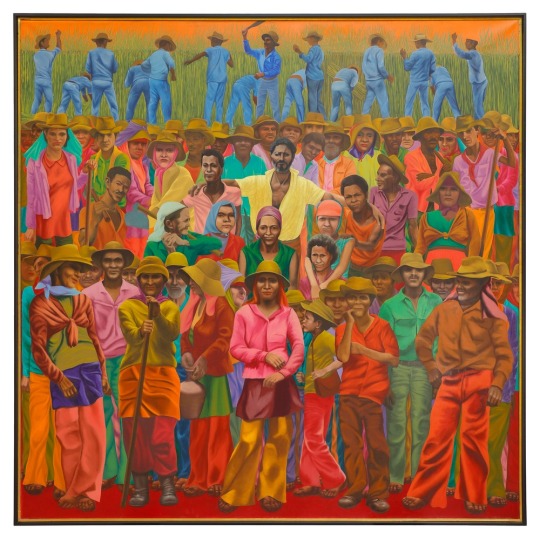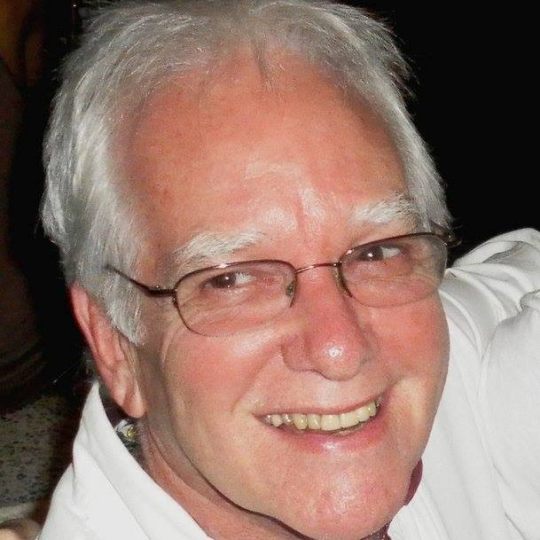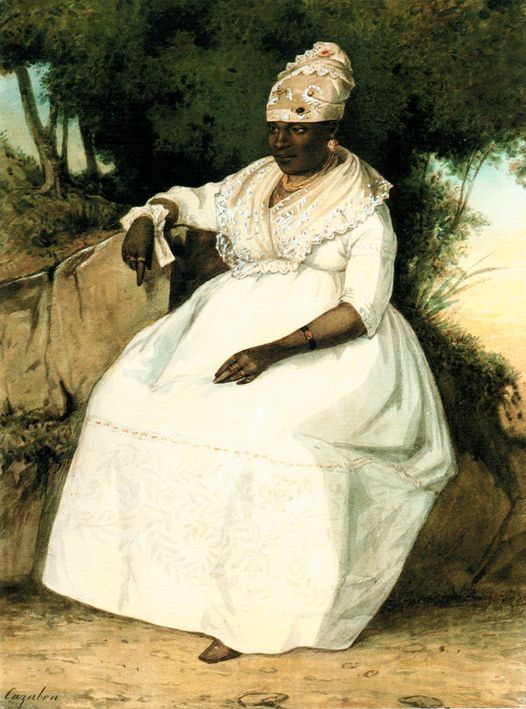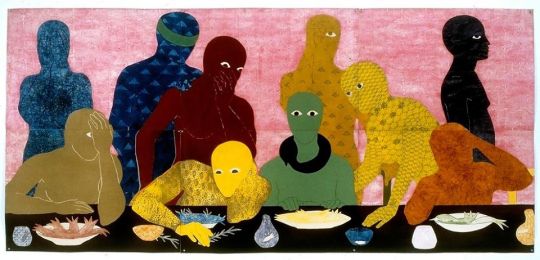#sexypink/Latin American and Caribbean Artists
Explore tagged Tumblr posts
Text

Sexypink - Outsoil - A look at Caribbean and Diasporic Artists in exile.
..............................................................................................................................
[Outsoil - forms in exile in the collection of the National Center for Fine Arts]
The Cnap dedicates the second "Zoom" of its collection to exiled artists, inviting curators Estelle Nabeyrat and Pedro de Llano. Discover a new artist each week!
"This selection of 20 works is based on work started in 2017 as part of the Cnap Curatorial Research Fellowship." The title is inspired by the Cnap collection’s “above ground” condition, defined as a “without walls” background, originally intended for circulation.
This survey identified an unreleased set of 26 contemporary artists (1945 to the present). Mostly exiled in France -, they have left the Latin American and Caribbean territories.
Crossing the history of the Cnap’s collection and that of its works with various sources from the social science and the history of art, “Hors-sol” initially sought to propose an updated definition of the term “exile”.
Including artists who have left authoritarian regimes, post-colonial conflict zones as well as skeptics and disappointments of the Cuban Revolution, the different forms of exile encountered range from political exile to the quest for freedom, necessary for artistic expression. The variety of artist profiles, their journeys have allowed to clarify an intersectional problem, which has enriched this research.
This selection, drawn from the corpus we have constructed, takes into account the diversity of forms of exile related to socio-political problems and translates various degrees of liberticidal pressure exerted on artists. "Hors-sol" also offers, throughout the history of the Cnap acquisitions, a unique reading of the policy of welcoming artists exiled in France. »
Estelle Nabeyrat and Pedro de Llano
Visual: "The People of the Parrot Land", Netto, 1979
© D.R./Cnap/Photo : Fabrice Lindor
@estellenabeyrat
#sexypink/National Centre for Fine Arts#sexypink/CNAP#sexypink/Latin American and Caribbean Artists#sexypink/Cuban Artists#tumblr/CNAP#tumblr/Cuban and Latin American Art#tumblr/Artists in Exile#artists in exile#Cuban Artists#Latin American Artists#CNAP
4 notes
·
View notes
Text

Sexypink - A huge loss to Trinidad and Tobago. Thank you Geoffrey for your vision, kindness and love.
..............................

Geoffrey's contribution to Art history. He was the definitive writer on Cazabon.

An image of one of Cazabon's paintings.
Finally, a beautiful tribute to Geoffrey MacLean from one of many friends.
.................................
TRIBUTE TO GEOFFREY MACLEAN. In each island nation of the Eastern Caribbean, economies of scale make it so that there are only one or two (and if they are lucky, three or four) local experts in some field of study which has little to do with industry or clerical work but everything to do with the national character and its history. Because they are often without precedent, these experts often have had to travel abroad for their training or are otherwise self-trained in their chosen sector of the liberal arts/humanities/social sciences.
Trained architect and avocational art historian Geoffrey MacLean was one of these indispensable sages in the field of visual studies and the built environment. He was the world’s foremost specialist on nineteenth-century landscape and genre painter Michel Jean Cazabon. Cazabon was a partially unwitting member of a global late colonial/early post-colonial landscape painting tradition that encompassed artists such as Mexican José María Velasco, the Chartrand brothers of Cuba, Filipino painter Fernando Amorsolo, and the painters of the Hudson River School in the United States. What all of these artists had in common was their urgent need to capture and pay tribute for posterity to the natural beauty of their respective lands before that “Edenic” verdure was despoiled by then-already encroaching industrialization.
MacLean’s passion for Cazabon pressed him not only to hone further the scholastic abilities he had already developed at Presentation College in his native Trinidad and Bristol University in the U.K. but to travel back and forth between the Caribbean and Europe hunting down examples and collections of Cazabon’s work. He also assisted the government of the Republic of Trinidad & Tobago in the acquisition of some Cazabon works for display in its National Museum and Art Gallery.
MacLean was generous with his knowledge, his time, and with his published materials. Every time I visited him, I came home with an armful of books and catalogues (one of my favorites is an unassuming little pamphlet of a catalogue called Chinese Artists of Trinidad & Tobago which probably played some part in my decision to write the book about Sybil Atteck on which I am currently working with Sybil’s nephew Keith). In graduate school, I relied heavily on MacLean’s Cazabon books for the research I was doing on colonial Latin American and Caribbean painting. MacLean’s enthusiasm for Cazabon’s genre painting, especially his rapt verbal and written descriptions of the late 19th century painting Negress in Gala Dress (pictured here) revealed to me that Cazabon’s paintings of local “types” (e.g., “Negress” instead of named individual) was sometimes a form of real portraiture and thus departed the tipo de país-to-costumbrismo continuum that we sometimes use in Latin American art history. Cazabon loved his people too much and included too much implied biography and other narratives in those paintings, to reduce their subjects to mere “types.” His titles were thus deceptively taxonomic.
Architect, scholar, art gallery director Geoffrey MacLean’s contribution to the study and preservation of T&T’s architecture was legendary even before his passing. He has searched out original plans for fretwork houses and saved some of these architectural jewels from the bulldozers of “developers.” He has done the same for members of the Magnificent Seven around the Queen’s Park Savannah and taught workshops on both the civic and residential architecture of Trinidad & Tobago. As MacLean himself now passes into legend, we are left with the perennial question in these small and mid-sized islands of the Eastern Caribbean each with their two or three experts on local art and architecture – who will pick up the torch?
~ Lawrence Waldron
#galleryyuhself/Geoffrey MacLean#galleryyuhself/publisher/gallery owner/architect#galleryyuhself/bereavement#galleryyuhself/medulla gallery#tumblr/aquarella gallery#tumblr/cazabon books#tumblr/architect#trinidad and tobago#Geoffrey MacLean#architect#visionary#gallery owner
0 notes
Text

Sexypink - no borders here.
#sexypink/Laura Anderson Barbata#sexypink/Latin American Artist#south america#caribbean#Laura Anderson Barbata
0 notes
Link
#Sexypink/René Emil Bergsma#Sexypink/Curaçao#Museum of Latin American Art#Sexypink/Caribbean Artists#Cuban#Marianela Orozco#Dominican#Fermín Ceballos#Barbadian#Ewan Atkinson#Puerto Rican#Frances Gallardo#Charles Juhasz-Alvarado#Roberto Stephenson#Curator Tatiana Flores
1 note
·
View note
Photo




`Sexypink~Belkis Ayón Manso (1967-1999) Cuban (thanks earthquake)
Belkis Ayón Manso (January 23, 1967 – September 11, 1999) was a Cuban artist and lithographer. Her work was based on Afro-Cuban religion, combining the myth of Sikan and the traditions of the Abakuá, a men’s secret society. She was considered a pioneer in the printmaking world as her prints and collographs feature dark silhouettes and ghostly-white figures. Manso uses haunting imagery such as snakes, goats, and empty almond-shaped eyes that stare out at the viewer. The Cuban printmaker mysteriously took her own life in 1999.
Belkis Ayón Manso studied at San Alejandro Academy in Havana, Cuba (1986) and received her Bachelor’s degree in Engraving from the Higher Institute of Art (ISA), Havana, Cuba (1991). She held residencies at the Tyler School of Art, Temple University, Philadelphia, PA; the Bronski Center, Philadelphia College of Art, Philadelphia, PA; and Benson Hall Gallery, Rhode Island School of Design, RI. Manso has been exhibited internationally in several museums and galleries. She has also participated in several Biennials such as the Havana Biennal, Bharat Bhavan International Biennial of Prints, India; The First International Print Biennial, Maastricht, Holland, and the San Juan Biennial of Latin American and Caribbean Engraving, among others. The artist’s work is included in several collections worldwide, such as the National Museum of Fine Arts, Havana Cuba; the National Museum of Engraving, Buenos Aires, Argentina; the Afrika Museum, Berg en Dal, Holland; the Museum of Contemporary Art, Los Angeles, CA; and the Museum of Modern Art, New York, NY, among others. She most recently had her first U.S. museum retrospective of her work at the Fowler Museum at UCLA, Los Angeles, CA (2016).
#Sexypink/Belkis Ayon Manso#Sexypink/Cuban Artist#Sexypink/Havana Biennale#Belkis Ayon Manso#Cuban#printmaker#Caribben
9 notes
·
View notes